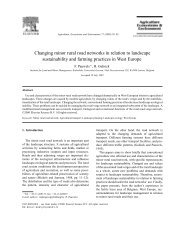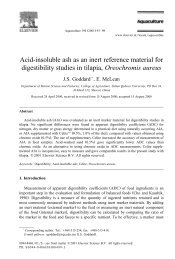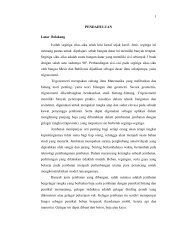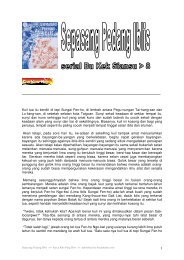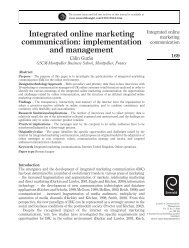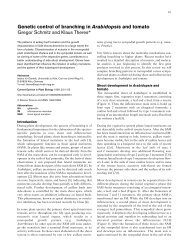Bogomips mini-Howto - Directory UMM
Bogomips mini-Howto - Directory UMM
Bogomips mini-Howto - Directory UMM
Create successful ePaper yourself
Turn your PDF publications into a flip-book with our unique Google optimized e-Paper software.
3. The frequently asked questions about BogoMips<br />
Several authors have contributed to my knowledge of BogoMips. In this place, I would like to thank them<br />
highly.<br />
3.1. What are BogoMips<br />
Quoted from the Internet, origin unknown but brought to the attention by Eric S Raymond esr@thyrsus.com,<br />
and Geoff Mackenzie freon@dialstart.net, there is an humourously illustrative definition of BogoMips as ''the<br />
number of million times per second a processor can do absolutely nothing.''<br />
On a more precise basis, from Lars Wirzenius' wirzeniu@kruuna.Helsinki.FI mail of 9 September 1993,<br />
explaining <strong>Bogomips</strong>, with additional detailed information by Alessandro Rubini,<br />
rubini@morgana.systemy.it, and by howto−author Wim van Dorst:<br />
`MIPS is short for Millions of Instructions Per Second. It is a measure for the computation<br />
speed of a program. Like most such measures, it is more often abused than used properly (it is<br />
very difficult to justly compare MIPS for different kinds of computers).<br />
BogoMips are Linus's invention. The kernel (or was it a device driver?) needs a timing loop<br />
(the time is too short and/or needs to be too exact for a non−busy−loop method of waiting),<br />
which must be calibrated to the processor speed of the machine. Hence, the kernel measures<br />
at boot time how fast a certain kind of busy loop runs on a computer. "Bogo" comes from<br />
"bogus", i.e, something which is a fake. Hence, the BogoMips value gives some indication of<br />
the processor speed, but it is way too unscientific to be called anything but BogoMips.<br />
The reasons (there are two) it is printed during boot−up is that a) it is slightly useful for<br />
debugging and for checking that the computers caches and turbo button work, and b) Linus<br />
loves to chuckle when he sees confused people on the news.'<br />
BogoMips are being determined in /usr/src/linux/init/main.c (simple C algorithm, with a nice<br />
example of floating point arithmetic within the fully integer kernel), and the pertaining kernel variable<br />
loops_per_sec is used in several drivers for more serious purpose. The actual delay function udelay() is in<br />
assembler, and therefore each port has its own definition in /include/asm/delay.h. The loops_per_sec<br />
variable and the udelay() function are used in numerous drivers, see:<br />
cd /usr/src/linux #or where else source is located<br />
find . −name '*.[hcS]' −exec fgrep loops_per_sec {} /dev/null \;<br />
find . −name '*.[hcS]' −exec fgrep udelay {} /dev/null \;<br />
The BogoMips calculation loop for the non Intel CPUs is similar but not the same, because it is programmed<br />
in another assembler language. BogoMips is however the only portable way over the various CPUs<br />
(Intel−type and non Intel−type) for getting an indication of the CPU speed. Even CPU clock speed is not<br />
available on all CPUs.<br />
3. The frequently asked questions about BogoMips 3



